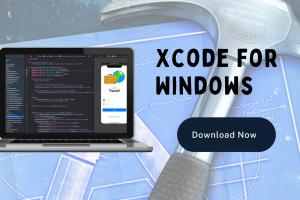Ultimate Guide: How to Download Xcode on PC or Mac

-
Quick Links:
- 1. Introduction to Xcode
- 2. Prerequisites for Downloading Xcode
- 3. Downloading Xcode on Mac
- 4. Downloading Xcode on PC
- 5. Setting Up Xcode After Download
- 6. Common Issues and Troubleshooting
- 7. Case Studies: Successful Apps Built with Xcode
- 8. Frequently Asked Questions
1. Introduction to Xcode
Xcode is Apple's integrated development environment (IDE) used for developing applications for macOS, iOS, watchOS, and tvOS. It offers a suite of software development tools that enable developers to build high-quality apps with ease. Whether you are a seasoned programmer or a newcomer to app development, Xcode provides a plethora of resources to help you create stunning applications.
2. Prerequisites for Downloading Xcode
Before downloading Xcode, it’s essential to ensure you meet the following prerequisites:
- For Mac users: Ensure you are running macOS Sierra (10.12) or later.
- For PC users: A virtual machine or a Hackintosh setup capable of running macOS.
- At least 10GB of free disk space to accommodate the download and installation.
- An Apple ID to access the Mac App Store and download Xcode.
3. Downloading Xcode on Mac
Downloading Xcode on a Mac is a straightforward process. Follow these steps:
- Open the Mac App Store: Click on the App Store icon in your Dock or search for it using Spotlight.
- Search for Xcode: Use the search bar at the top-left corner to type "Xcode".
- Select Xcode: Click on the Xcode app from the search results.
- Download and Install: Click on the "Get" or "Download" button to begin the installation process.
- Wait for the Installation to Complete: Depending on your internet speed, this may take some time. Once completed, you can find Xcode in your Applications folder.
4. Downloading Xcode on PC
Downloading Xcode on a PC is not straightforward since it is not officially supported. However, you can follow these methods:
4.1 Using a Virtual Machine
Installing macOS on a virtual machine allows you to run Xcode on a PC. Here’s how:
- Install Virtualization Software: Use software like VMware or VirtualBox.
- Download macOS Image: Obtain a macOS image file from a reliable source.
- Create a New Virtual Machine: Set up a new virtual machine and allocate sufficient resources (RAM, CPU).
- Install macOS: Boot the virtual machine using the macOS image and follow the on-screen instructions.
- Download Xcode: Once macOS is running, open the Mac App Store and follow the steps in Section 3 to download Xcode.
4.2 Using a Hackintosh
A Hackintosh is a non-Apple computer that runs macOS. Here’s a brief overview:
- Choose Compatible Hardware: Ensure your PC's hardware is compatible with macOS.
- Use Clover or OpenCore: These boot loaders help you install macOS on non-Apple hardware.
- Install macOS: Follow detailed guides available online to set up macOS on your PC.
- Download Xcode: Once macOS is up and running, access the Mac App Store to download Xcode.
5. Setting Up Xcode After Download
Once Xcode is downloaded, you’ll need to set it up. Here’s how:
- Open Xcode: Go to your Applications folder and double-click on Xcode.
- Agree to Terms: Accept the license agreement to proceed.
- Install Additional Components: Xcode may prompt you to install additional components; allow this process to complete.
- Sign in with Your Apple ID: This is necessary for accessing developer features and testing apps.
6. Common Issues and Troubleshooting
Here are some common issues users face when downloading or installing Xcode and how to troubleshoot them:
- Installation Failed: Ensure you have sufficient disk space and a stable internet connection.
- Slow Performance: Close other applications to free up system resources.
- Compatibility Issues: Verify that your macOS version supports the Xcode version you're trying to install.
7. Case Studies: Successful Apps Built with Xcode
Many successful apps have been developed using Xcode. Here are a few examples:
Case Study 1: Airbnb
Airbnb's mobile application, built using Xcode, showcases robust features like user authentication, booking management, and payment processing, highlighting Xcode's capabilities.
Case Study 2: Instagram
Instagram’s iOS app leverages Xcode's tools for smooth user experiences and engaging features, making it one of the most popular social media platforms globally.
8. Frequently Asked Questions
1. Can I run Xcode on Windows?
Officially, Xcode is only available on macOS. However, you can use a virtual machine or Hackintosh to run it on Windows.
2. Is Xcode free?
Yes, Xcode is available for free on the Mac App Store.
3. What are the system requirements for Xcode?
Xcode requires macOS Sierra (10.12) or later and at least 10GB of free disk space.
4. Can I develop iOS apps without a Mac?
While it's possible using alternative tools, a Mac is required for the best development experience and access to Xcode.
5. How often is Xcode updated?
Apple regularly updates Xcode alongside new iOS and macOS releases, adding features and fixing bugs.
6. Do I need an Apple Developer account to use Xcode?
You can use Xcode without an Apple Developer account, but you need one to publish apps on the App Store.
7. Can I use Xcode to develop for platforms other than Apple?
Xcode is primarily designed for Apple platforms, but you can develop cross-platform apps using frameworks like React Native.
8. What programming languages can I use with Xcode?
Xcode supports Swift, Objective-C, C, and C++ among others.
9. How do I uninstall Xcode?
To uninstall Xcode, drag it from the Applications folder to the Trash, and then empty the Trash.
10. Where can I find Xcode documentation?
You can find comprehensive documentation on the Apple Developer website.